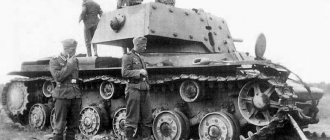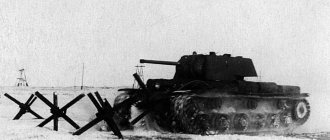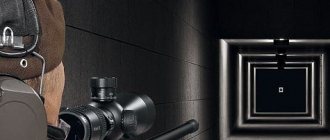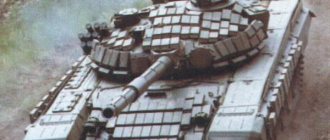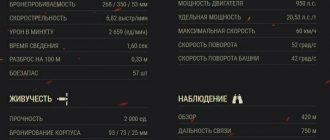The branch is one of the best for raising the rating of WN 8, the choice of many extras and professional players.
Patton level 10 is a classic representative and crown of an already quite old branch of American STs. Since then, many new medium tanks from various nations have appeared in the game, competing for the title of the best MT, but this tank has not yet said its last word in the random.
Greetings, tankers! Here's Wotpack and a review of the American tier 10 medium tank M48A5 Patton in World of Tanks. In this guide, we will try to understand the advantages and disadvantages of this once formidable car in comparison with its classmates, including the top of the new branch of Polish STs. Let’s clarify how relevant this car is in the current randomization.
TTX M48A5 Patton
Firepower
We will compare Patton with other upgradeable CTs, similar in gameplay, with a front turret and without a drum.
From the comparison it is clear that the M48A5 has a good alpha of 390 units of average damage. In this indicator, it is superior to the Ob.430U, 121 and Leopard 1. However, these vehicles are inferior to it in the DPM, in which Patton lags only behind the STB-1 and Ob.140.
But the latter have less alpha, and it can be more difficult to realize damage per minute.
So Patton’s gun is well balanced in terms of one-time damage and rate of fire, and the DPM can be pumped up to 3659 units.
In terms of armor penetration with a basic projectile, the Patton is noticeably inferior only to the Leopard and only slightly to the E50 M. In terms of penetration with gold , it is inferior to the Soviet and Chinese ST, but superior to the Leopard and to a large extent to the Pole, which looks sad compared to all the others.
The main shells here are sub-caliber, which means they lose more armor penetration with distance and penetrate armor worse due to worse normalization than armor-piercing ones. But their flight speed is 1478 m/sec, which is very comfortable when firing in advance. Plus, sub-calibers are not “eaten up” by screens and tracks like cumulative ones, which allows you to successfully inflict damage through the drive gears and put the enemy “on the rink.”
Premium cumulative ammunition also has a fairly good speed for this type of ammunition, they do not lose penetration with distance and allow you to confidently penetrate most opponents head-on.
In general, in this regard, Patton is far from a helpless kitten and can adequately stand up for himself.
The American traditionally has a comfortable air gun , the gun tilts at -9 degrees, which allows you to comfortably play off the terrain. In this regard, only STB-1 with an indicator of -14 degrees can seriously surpass it. In terms of speed of aiming, Patton is beaten only by Leopard 1, and in terms of accuracy it is average, ahead only of the Ob.430U. Overall, the gun is a very comfortable machine, as it has excellent stabilization.
Vitality
Patton has a sufficient number of hit points, only the E50 M has more. In terms of the frontal armor of the hull and turret, the numbers seem to be not bad. But in fact, serious armor is only in the gun mantlet.
It penetrates into the upper frontal part with tanks two levels lower with a penetration of 200+, into the cheeks of the tower with nines and tens with a penetration of 270+. There is no armor at all on the sides of the hull and turret, as well as the commander's hatch; everyone always gets through there. And of course, due to the large cardboard body, the M48A5 suffers greatly from art.
Mobility and reconnaissance
In terms of power density , the Patton is better only than the Soviets and the Chinese, and in terms of maximum speed it is significantly inferior to all of its classmates under consideration. But the maneuverability is not bad, so it spins quite briskly in place.
A huge field of view of 420 m can be increased to a phenomenal 549 m with the help of optics, perks and soldering. In this indicator, it surpasses all competitors. But with camouflage everything is quite sad, plus this huge barn is difficult to hide in the bushes.
Assembly for review
The history of the M48 tank - Patton III
In mid-1950, the Detroit Arsenal decided to develop a new tank due to the fact that the newly developed M47 tank (Patton II) was simply a continuation of the M26 tank series, which was developed during World War II. And at that time, the M46 (Patton) tank participating in the Korean War may have coped with the Korean “thirty-fours,” but the T-34-85 gun penetrated the frontal armor of the M46 without any problems with an armor-piercing projectile.
This did not suit the American command, so even before the M47 was put into service, work began on a completely new tank - the M48. Work on this tank began in October 1950 at the Detroit Tank Arsenal. The T43 heavy tank was taken as the basis, and the M48 is in fact simply a mini version of this tank. The hull of the tank had a unique cast shape, which made it possible to maximize the level of protection of the tank. Engineers from DTA** completed the project in just two months. Then they handed over the drawings of the tank and gave the task to build six prototypes of the equipment.
Construction took 6 times longer than its design. The first prototype rolled off the production lines a year after receiving the order, namely on February 23, 1951. The next five copies of the vehicle were built in June 1952. However, by the standards of tank development, this is not so much. It should be noted that the turret was not built specifically for the 90-mm caliber, but, so to speak, “for growth,” so that later, during modernization, it would be possible to replace the caliber of the gun with a larger one. At the initial stage, the small caliber of the gun relative to the turret made it possible to make the angles of inclination in the turret near the gun mantlet more acute. The crew of the new tank was supposed to be reduced to 4 people by removing the gunner-radio operator. This made it possible to reduce the volume of the heavily armored area and move the driver to a place convenient for him.
The tank was tested at the Aberdeen Proving Ground until the end of 1952. The tests revealed many shortcomings, which were hastily patched up, leaving a number of serious problems. But US troops needed a new tank, and in April 1953 it was accepted for service.
The hastily assembled M48 tanks did a disservice to American soldiers. They often failed, broke down almost out of the blue and were sent to the factory for repair and modification. At the same time, the factories refused to accept that something was wrong with the tanks and continued to build the M48, despite reproaches from the military.
One of the main problems of the M48 was its short range. It was only 120 km, for comparison with MS-1 (T-18) this figure was 100 km. In order to increase the power reserve, four 200-liter barrels were installed at the rear, which were then connected by pumps to the fuel compartment.
Advantages and disadvantages
As a summary of the tank’s performance characteristics, let’s summarize by highlighting the main pros and cons.
Advantages:
- high one-time damage
- good DPM
- good UVN
- excellent stabilization
- good maneuverability
- great review
Cons of the M48A5 Patton:
- huge dimensions
- weak hull armor
- vulnerabilities in turret armor
- low top speed
- poor camouflage
Tactical and Technical Characteristics:
Here will be the characteristics of the M48A3 tank version, because... it is the most common and most likely the one that will be introduced into the game.
- Weight, t - 47
- Crew, hours - 4
- Case length, mm — 6967
- Length with gun forward, mm - 8811
- Case width, mm — 3632
- Height, mm — 3241
Reservations:
- Body forehead (top), mm/deg. — 110 / 60°
- Body forehead (bottom), mm/deg. — 102 / 53°
- Hull side, mm/deg. — 51…76 (thicker in front) / 0°
- Hull stern (top), mm/deg. — 35 / 30°
- Hull rear (bottom), mm/deg. — 25 / 60°
- Bottom, mm - 13...67. Closer to the lower frontal part it became thicker.
- Housing roof, mm - 57
- Turret front, mm/deg. — 110/ 0°
- Gun mask, mm/deg. — 114 / 30°
- Tower side, mm/deg. — 76 / 0°
- Tower feed, mm/deg. — 51 / 0°
- Tower roof, mm - 25
Engine and mobility characteristics:
- Diesel, hp — 750
- Maximum speed, km/h - 48
- Cruising range on the highway, km - 500
- Specific power, hp/t - 16
- Climbability, degrees. — 30°
Equipment selection for M48A5 Patton
The choice of equipment for any tank primarily depends on the playing style. Therefore, for any machine we can offer several viable setups.
A universal option for ST, also suitable for this tank, would be as follows:
- improved ventilation – will add +11 m to vision, optimally used with the military brotherhood, vision perks and, if possible, rations
- vertical stabilizer - will reduce the already small dispersion when moving and turning the tank and turret, which will allow you to converge almost instantly
- gun rammer - a non-discussed must-have for increasing DPM
If you want to increase the maximum speed, then on this tank you can sacrifice the stabilizer and put in the first slot with a mobility specialization:
- turbocharger – will add +5 km/h forward and +3 km/h back
If your goal is to improve your visibility to the maximum, then instead of the rammer you can install:
- coated optics will add 42 meters of visibility.
Tank modifications:
M48A1
M48A1 - In August 1953, the shape of the commander's turret was changed. Now it was more flattened. A 12.7-mm machine gun was also installed in the commander’s cupola, which significantly reduced the space inside the cupola, which made the commander’s work more difficult. The changes also affected the chassis. A more reliable transmission was installed, and gas deflectors were installed on the MTO*** grille.
M48A2
M48A2 is a more serious modification. The engine and transmission were replaced. The change in power plant required changes in the rear part of the hull: the bottom of the MTO was equated to the bottom of the hull as a whole. These changes affected such an important characteristic of the tank as cross-country ability. It deteriorated - this did not suit the military and they had to return the old transmission installed on the M48A1. The engine was smaller in size - this contributed to an increase in tank volume from 757 liters to 1440 liters. Three such tanks were tested in the fall of 1953. Two years of testing and in October 1955 the tank was sent into mass production. There was also a minor modernization called M48A2C, which involved replacing the old rangefinder with a new, stereoscopic rangefinder M17C “Considenz”. It made it possible to more accurately determine the distance to the target. Production of these two models continued until 1959 and became the most widespread among all modifications.
M48A3
M48A3 - The main feature was a diesel engine, and not a gasoline engine, as on other versions. Due to this change, the power reserve increased to 480 km. Three prototypes were delivered to the Aberdeen Proving Ground in April 1960. The engineers wanted to increase firepower by installing a 105-mm gun, since there were prospects for this. But here the economic and practical point of view intervened. Firstly, it was planned that all M48A1s (about 1000 units) would be upgraded to M48A3s, and then the question arose: “What should we do with the 90-mm guns?” or this one: “Why do we then need several hangars with shells for a 90-mm cannon?” Secondly, there are additional costs for the production of 105 mm guns. As a result, the increase in caliber had to be abandoned. And all the improvements of the M48A3 version were applied to the M48A1, except for the gun. Modernization began in 1963. A total of 919 vehicles were modernized by order of the Army and Marine Corps. External differences include air filters. It was this modernization that took combat action in Vietnam.
M48A4
M48A4 - Has a short history. This was an attempt to combine the M48 tanks (hull) and the M60 heavy production tank (turret) in order to place a 152 mm Shilela ATGM in it for launching missiles. two prototypes were made. The tests were successful, but for unknown reasons the tank was not put into production.
M48A5
M48A5 - This modernization was caused by the critical situation of tank forces in the United States. The MBT-70 was cancelled, the M60A2 was a failure, and several hundred M60A1s were sent to Israel as military aid. As a result, by the beginning of the 70s, the US Army did not have good tank potential. The M48A5 was designed to solve this problem. The American command demanded to achieve the same combat power as the M60. The M48A3 was chosen for modernization, which had to undergo 11 changes, one of which was the replacement of the 90 mm gun with a 105 mm one. The power plant has undergone several changes. Replacement of commander's turrets with Israeli-designed Urdan turrets. In addition to one machine gun in the commander's cupola, another machine gun was added to the loader's hatch. And an important innovation is dynamic protection. The “transformation” of M48A3 tanks into the brand new M48A5 took place at the Anniston repair and assembly center. About 2,000 tanks were converted.
Other upgrades:
The remaining modernizations were already carried out by other countries and had nothing to do with the history of the development of the tank. It is pointless to list them all, because... it may take five, six, or even more pages. Perhaps it is worth noting only one model - Super M48.
The tank had a fully stabilized 105 mm L7A3 cannon with a new MOLF*****-48 fire control system. The engine had a power of 1000 hp. The transmission was fully automatic. The rollers were equipped with hydraulic shock absorbers. Also replacing all torsion bars with stronger ones. The tracks are used from the Leopard-2 tank. Immediately upon inspection of the vehicle, the applied composite armor catches your eye. The shape of the armor is the “blunt-shaped” design from WWII tanks*, and this is what became the calling card of German tank builders. Rubber-steel screens were hung on the sides of the tank, as well as many other innovations. In order to fully experience the power of the tank, I suggest you look at its photo:
More material on the topic
- M4 Sherman
- New deadly tank T90MS
Crew training
In what order to download perks also depends on the chosen play style.
For active play on the front line as a support vehicle or in a positional position, first of all it is better to level up repairs, then the profile perks for dispersion, combat brotherhood and vision.
The fifth perk you can take is Fire Extinguishing to replace the fire extinguisher with a Coke Box. If you prefer to stay undetected longer in order to snipe, then take Disguise.
Equipment selection
When playing at high levels, play it safe and take advantage of improved consumables:
- automatic fire extinguisher – recommended
- large repair kit – if possible
- large first aid kit - if possible
If you want to maximize your visibility and DPM, then in the first slot you can put:
- box of cola – +10% to crew skills (+5% to real tank parameters).
Combat use and operation:
- Vietnam War (1957-1975; USA, South Vietnam)
- Second Indo-Pakistani War (1965; Pakistan)
- Six Day War (1967; Israel, Jordan)
- Third Indo-Pakistani War (1971; Pakistan)
- October Arab-Israeli War (1973; Israel)
- Turkish invasion of Cyprus (1974; Türkiye)
- Lebanese Civil War (1975–1990)
- Iran-Iraq War (1980–1988; Iran)
- Operation Peace to Galilee (1982; Israel)
- Peacekeeping operation in Somalia (1992-1995; Pakistan)
- Conflict in Northern Lebanon (2007)
As of 2010, M48s are mainly in service in the Middle East, Europe and Asia. Turkey is considered the largest country using these tanks (As of 2010, the Turkish army has 2,876 M48A5T1/T2 tanks in service). In the United States, all M48 tanks were withdrawn from service by 1990.
How to play M48A5 Patton
Let's look at the final configuration, taking into account the above recommendations: Since the Patton has an accurate penetrating gun with a high projectile flight speed and good explosive weapons, but at the same time a large cardboard body, it is optimal to play it in a position from a medium distance, sticking the turret out from behind hills and embankments .
You can also play as a support vehicle from the second line , shooting back and hiding behind well-armored allies. Depending on the situation, you can snipe from a long distance, hiding in the bushes; guns and cumulative ammunition with high penetration allow this.
But playing on the first line is difficult; for weak players this is a sure and quick path to the hangar. Do not expect that you will be able to trade the turret; at close range you will be constantly pierced in the cheeks and hatch, and the enemy self-propelled gun will easily focus such a large vehicle.
The main thing is to choose the right direction at the very beginning, no matter if you are in a group with heavy or medium tanks. The main thing is that in the chosen direction you can realize the strengths of your car - great visibility and the ability to play from the terrain.
Pay special attention to the amount of enemy artillery and anti-tank guns - these are the most dangerous enemies for you. They are able to take out all your HP quite quickly, so in such cases, at the beginning of the battle it is better to play the role of a sniper from a long distance, where you will not be visible.
